The connection between nature and well-being is no longer a theory. Harvard physician Eva M. Selhub said, “Nature stimulates reward neurons in your brain. It turns off the stress response, which means you have lower cortisol levels, lower heart rate and blood pressure, and improved immune response.” In short, bringing nature into your workspace is one of the best things you can do for yourself and your employees. Many large companies are integrating biophilic design into their building’s architecture and benefiting from nature’s gifts. It’s also a great way to decrease your carbon footprint and increase sustainability measures.
Some of the world’s largest and most successful companies have integrated biophilic design into their headquarters and stores. Get inspired on how to add biophilic design to your workspace with these great examples.
Biophilic Design is for Everyone
You don’t need to have a Fortune 500 company to integrate plants into your building’s architecture. When you work with Plant Solutions, we find the design that’s right for you.
Companies That Have Integrated Biophilic Design In Their Offices

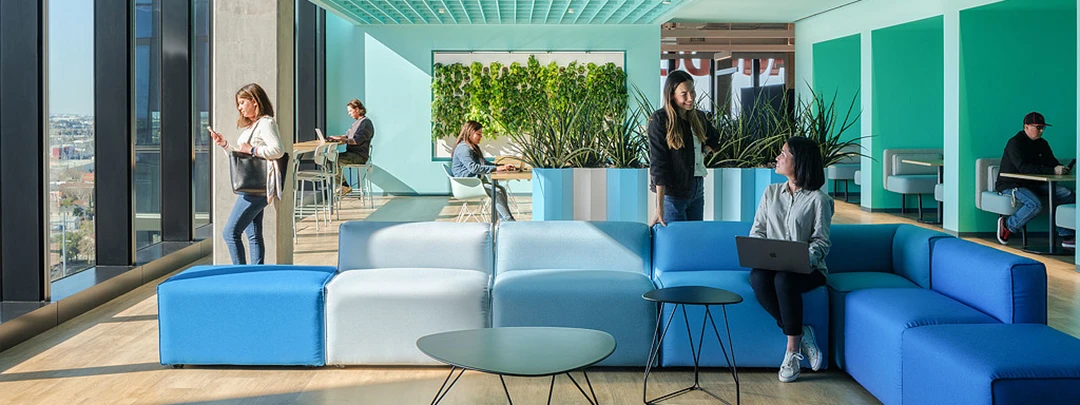
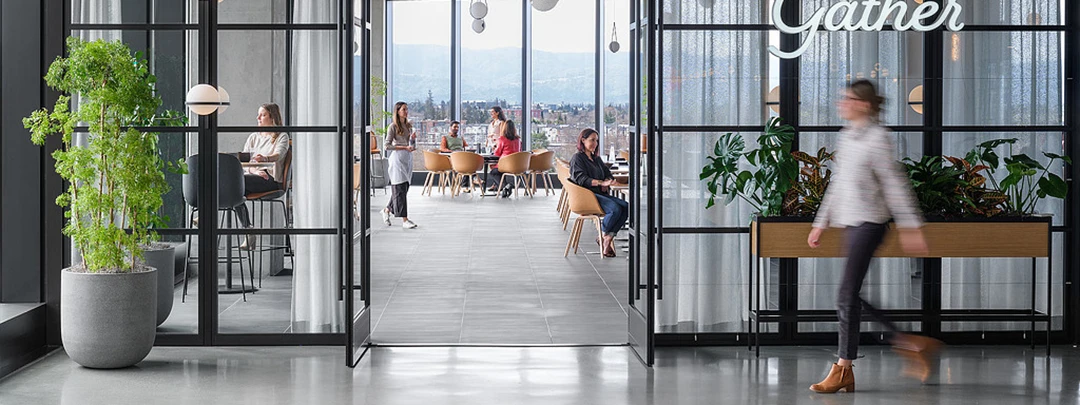
ADOBE: Located in sunny San Jose, California, the Adobe headquarters has adopted diverse elements of nature to create the best atmosphere possible for their employees. Design firm Gensler used a wide scope of biophilic principles, ranging from subtle color choices to overt nature murals. They even used a grassy textured carpet and wooden boxes to recreate a natural landscape as well as live plants and moss.
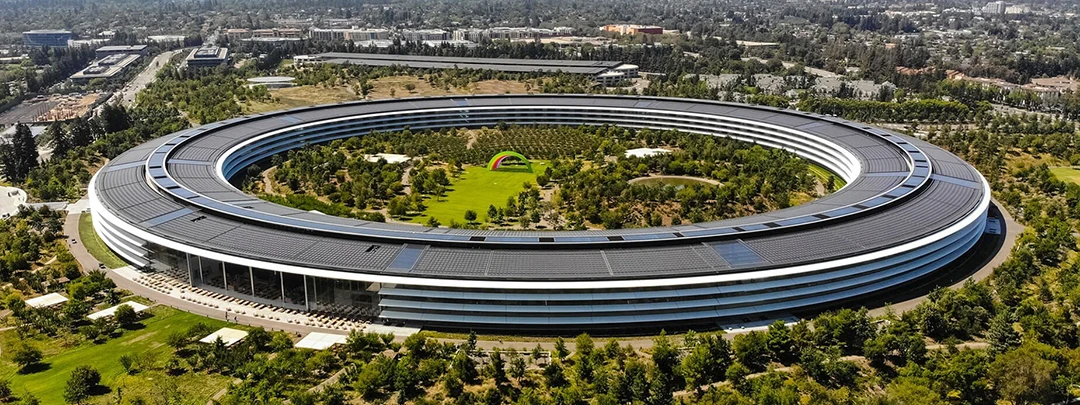
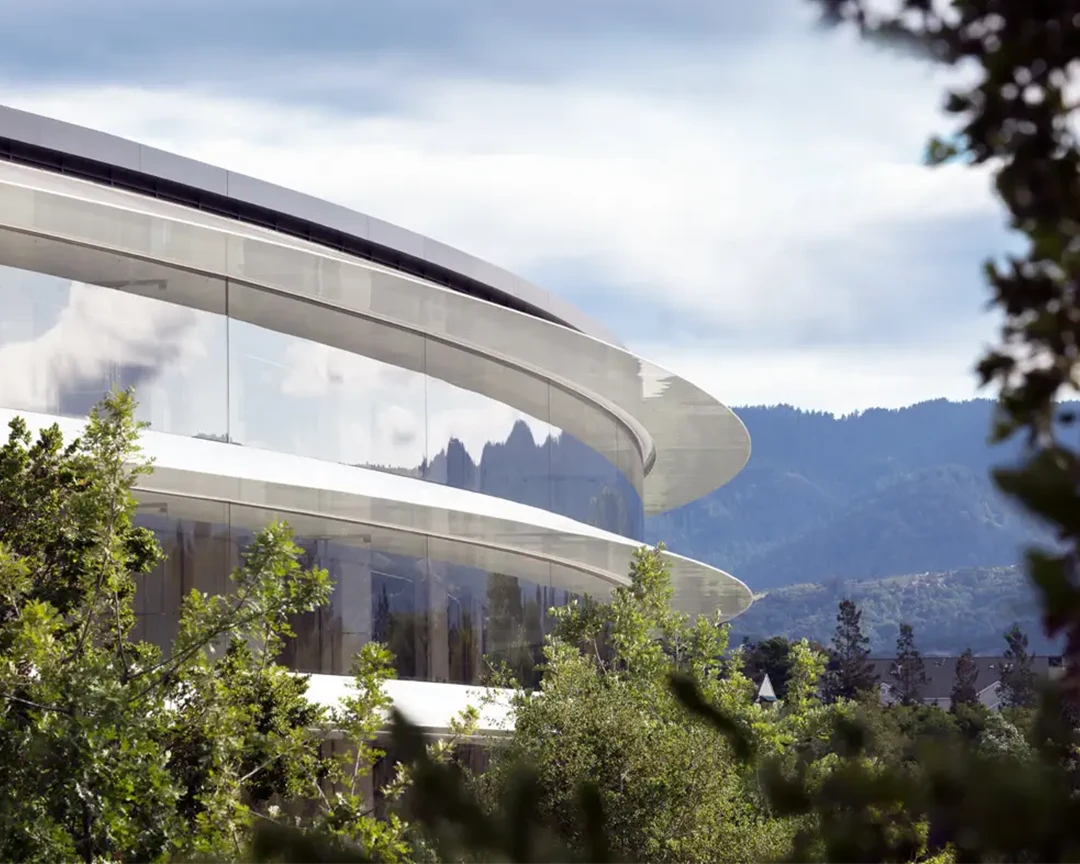
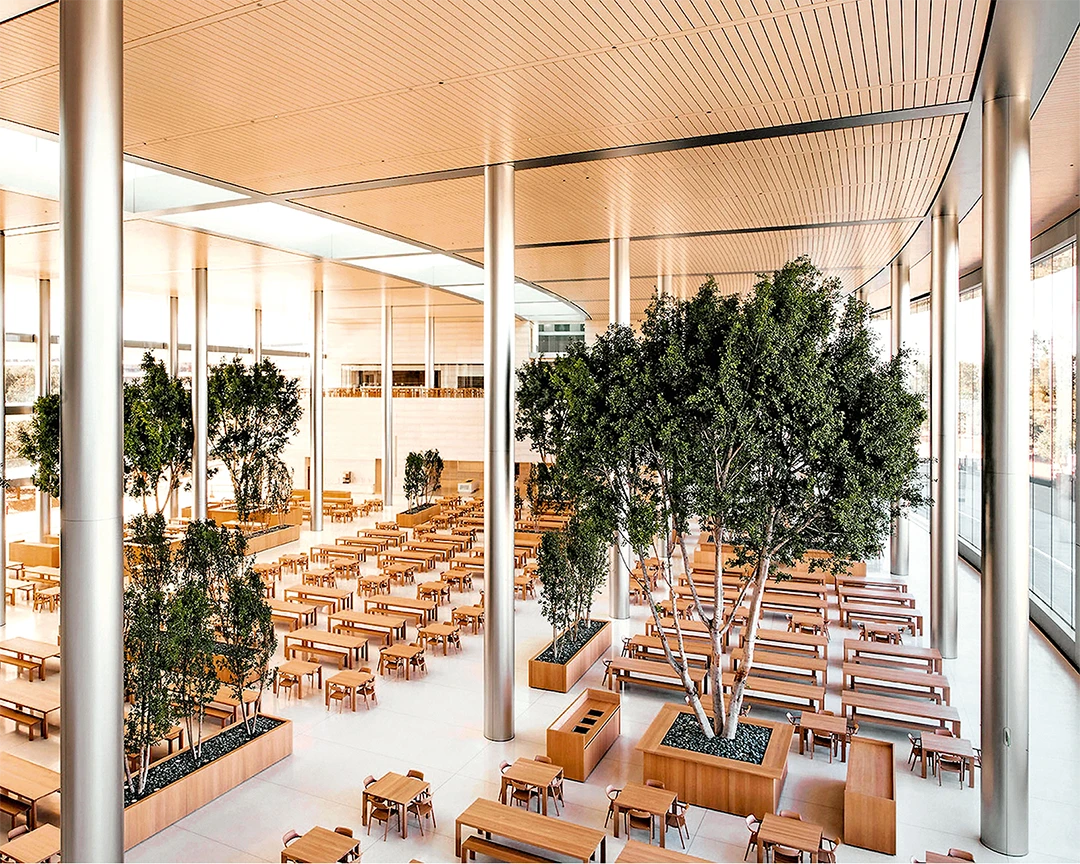
APPLE: Apple’s second campus in Cupertino, California is perhaps one of the most ambitious examples of biophilic design. The office, called The Ring, replicates the curves found in nature as well as lets natural light in from every angle. The round building is surrounded by trees and even has an orchard in the middle. The inside is full of neutral, calming colors and, as nature does, the inside can evolve with the company with configurable walls.
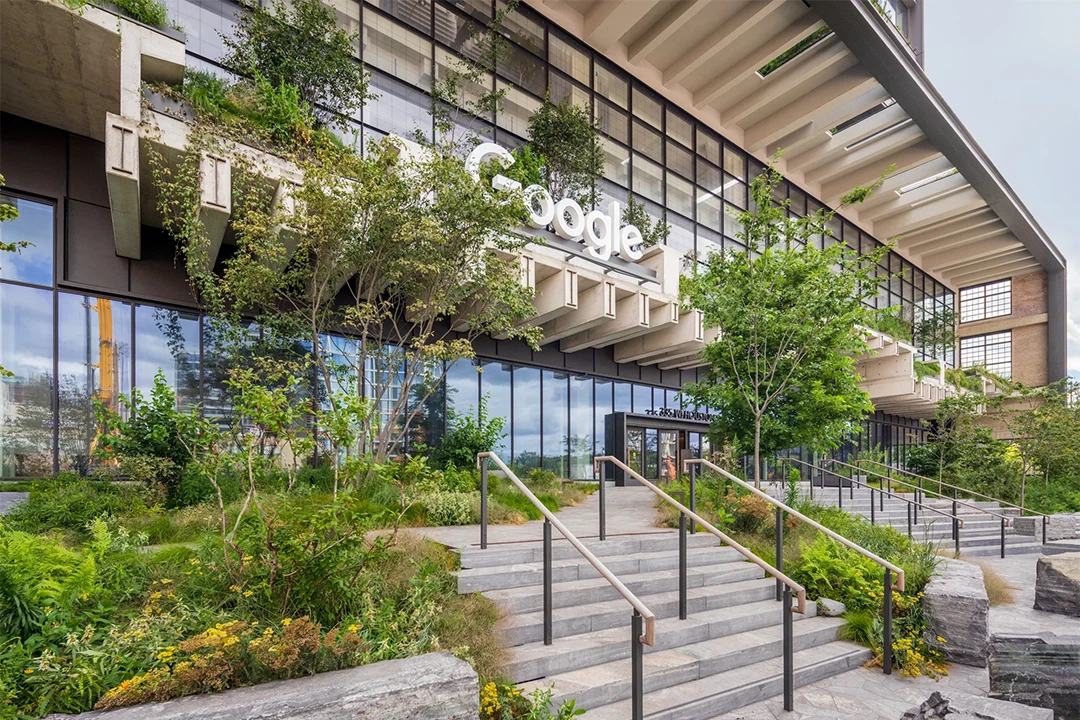
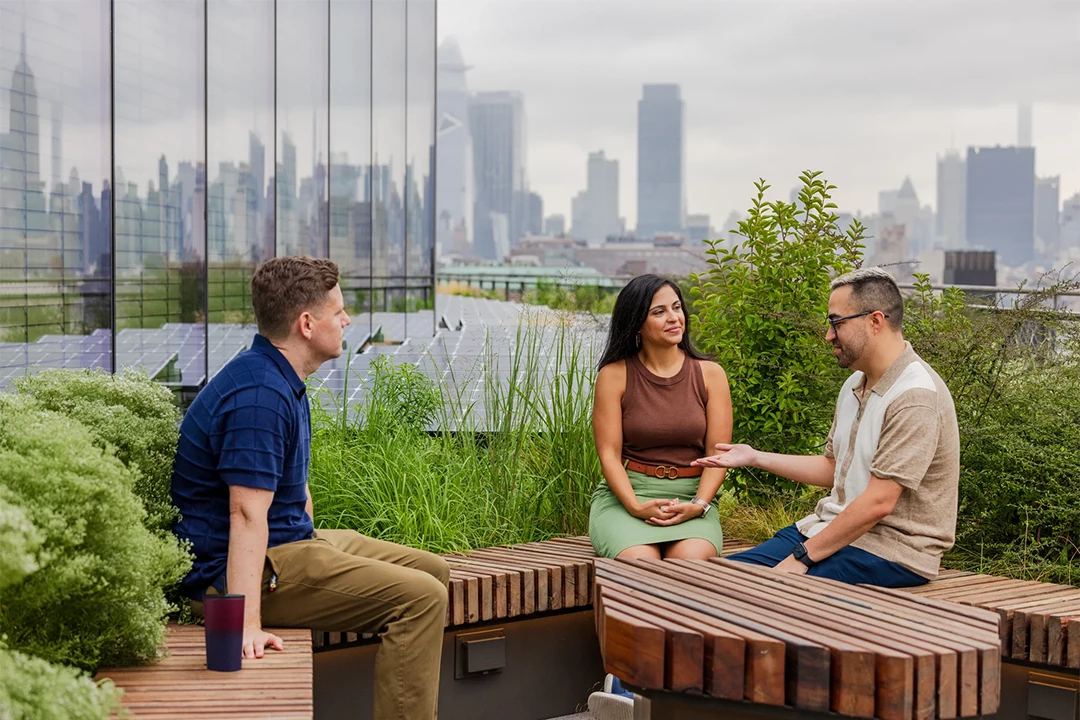
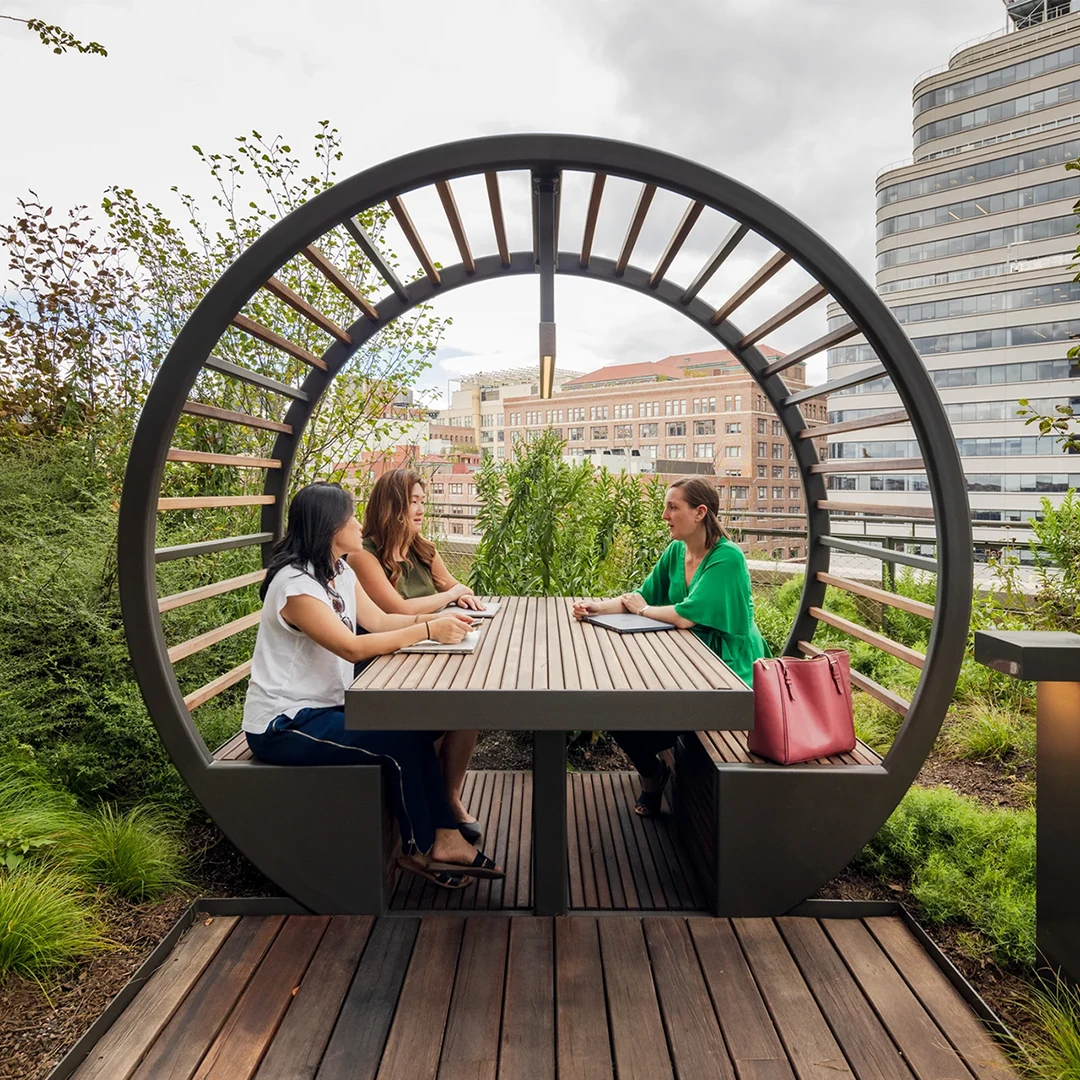
GOOGLE: Google’s purchase of St. John’s Terminal in New York City is one of the biggest single-building commercial real estate deals, coming in at a whopping $2.1 billion. It’s also going to be one of the greenest – literally and sustainably. Not only is the building mostly glass, connecting the workers inside to the Hudson River outside, but will also house enormous wraparound terraces full of indigenous flora. Architect Rick Cook said of the design, “It’s about a different theory of how to make people feel healthy, lower cortisol levels, and feel connected to a larger system of life.”
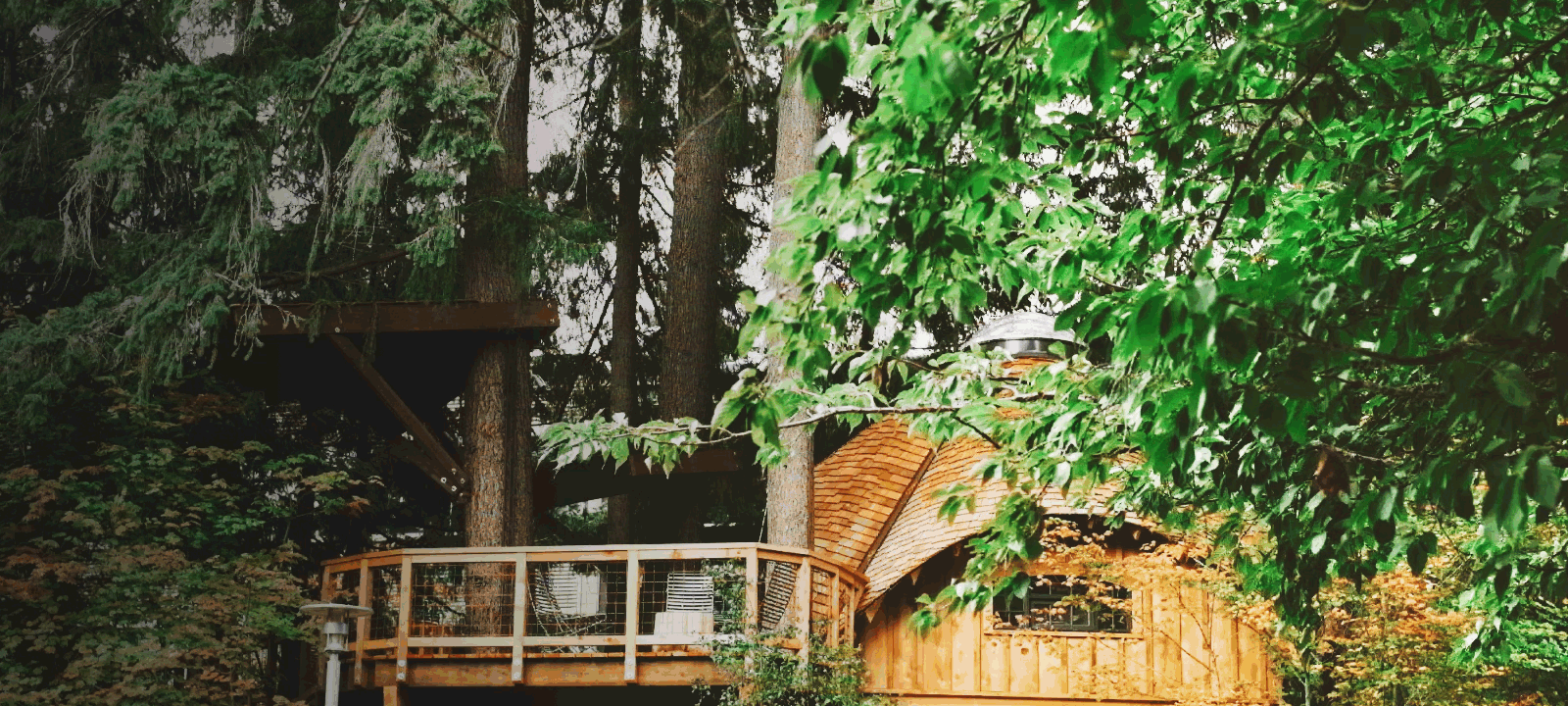
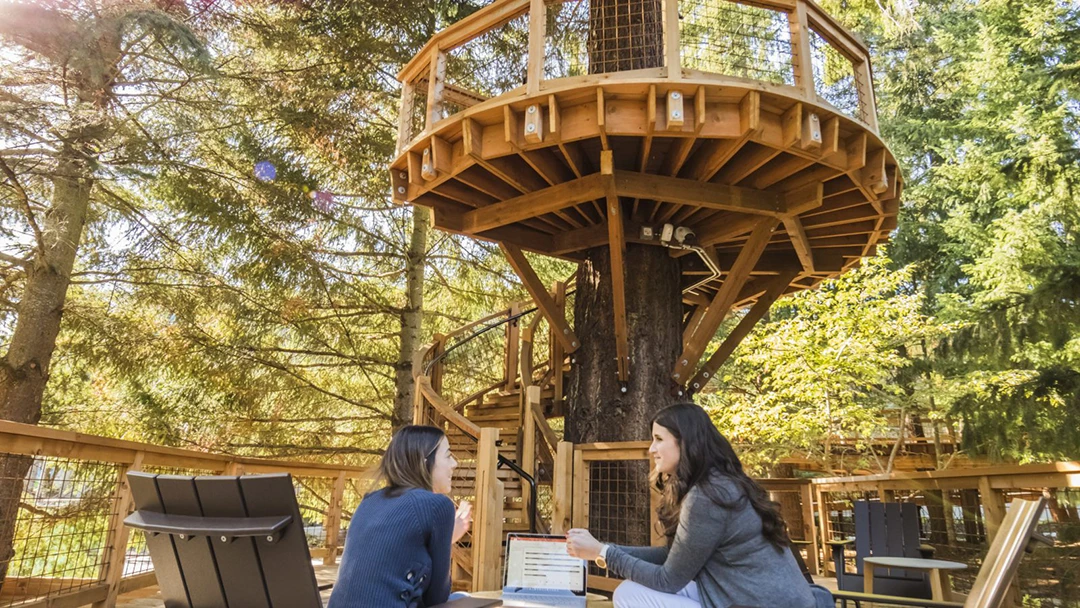
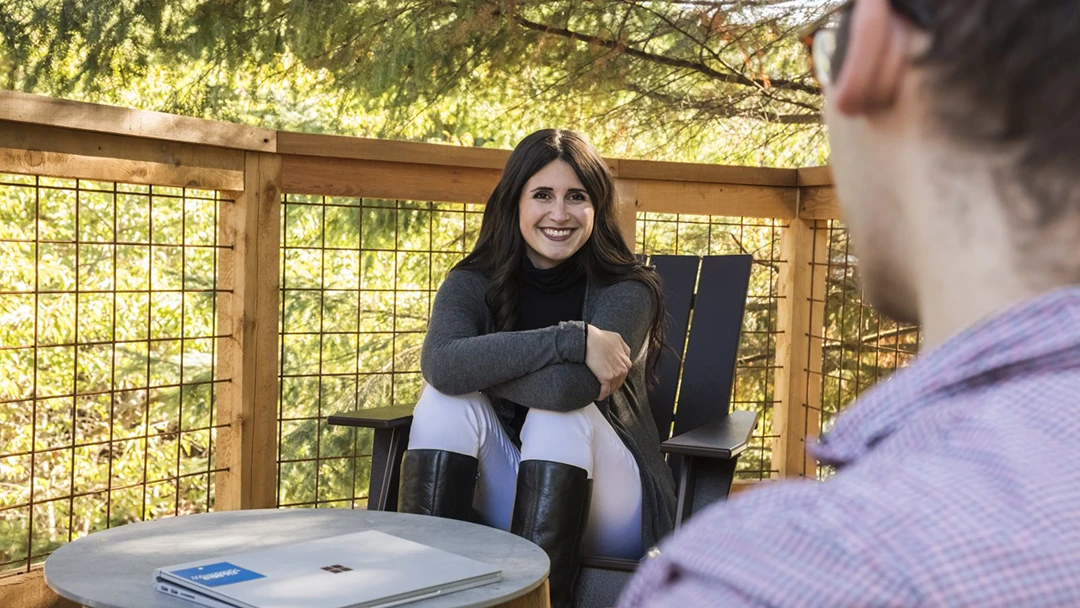
MICROSOFT: While biophilic design is often about bringing the outdoors in, it can also be used to bring employees out. Microsoft took the design principle to the next level by creating treehouse conference rooms. The structure is built into a beautiful Northwest Douglas fir and includes two enclosed treehouses and one elevated “crow’s nest.” This creative new workspace has in turn increased the creativity and productivity of the Microsoft employees.
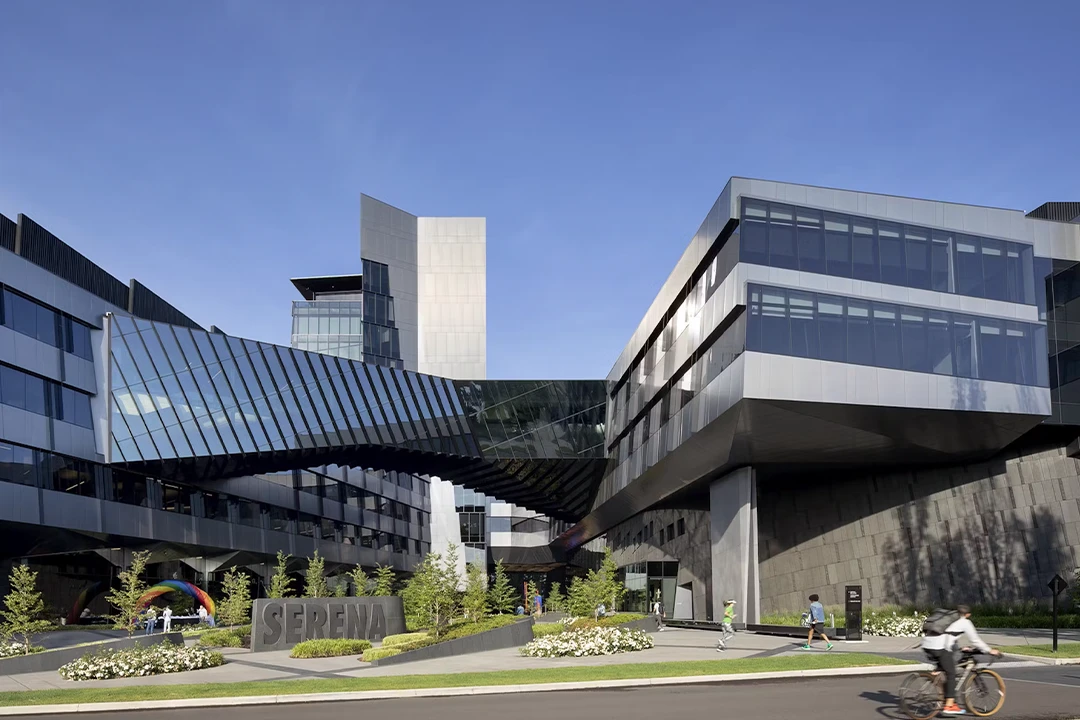


NIKE: The biophilic design at Nike’s Serena Williams Building not only brings natural light into the office but creatively blends in with the surrounding wetlands. The parking and loading areas were moved below ground and green roof terraces were incorporated to capture rainwater that drains into the wetlands. The outdoor area features beautiful walkways lined with indigenous plants and outdoor seating while the indoors simulate nature with the materials and lighting used.
Biophilic Design Is Here To Stay.
Are you ready to bring the benefits to your workplace? Work with Plant Solutions! We’ll find the design that’s right for you.
